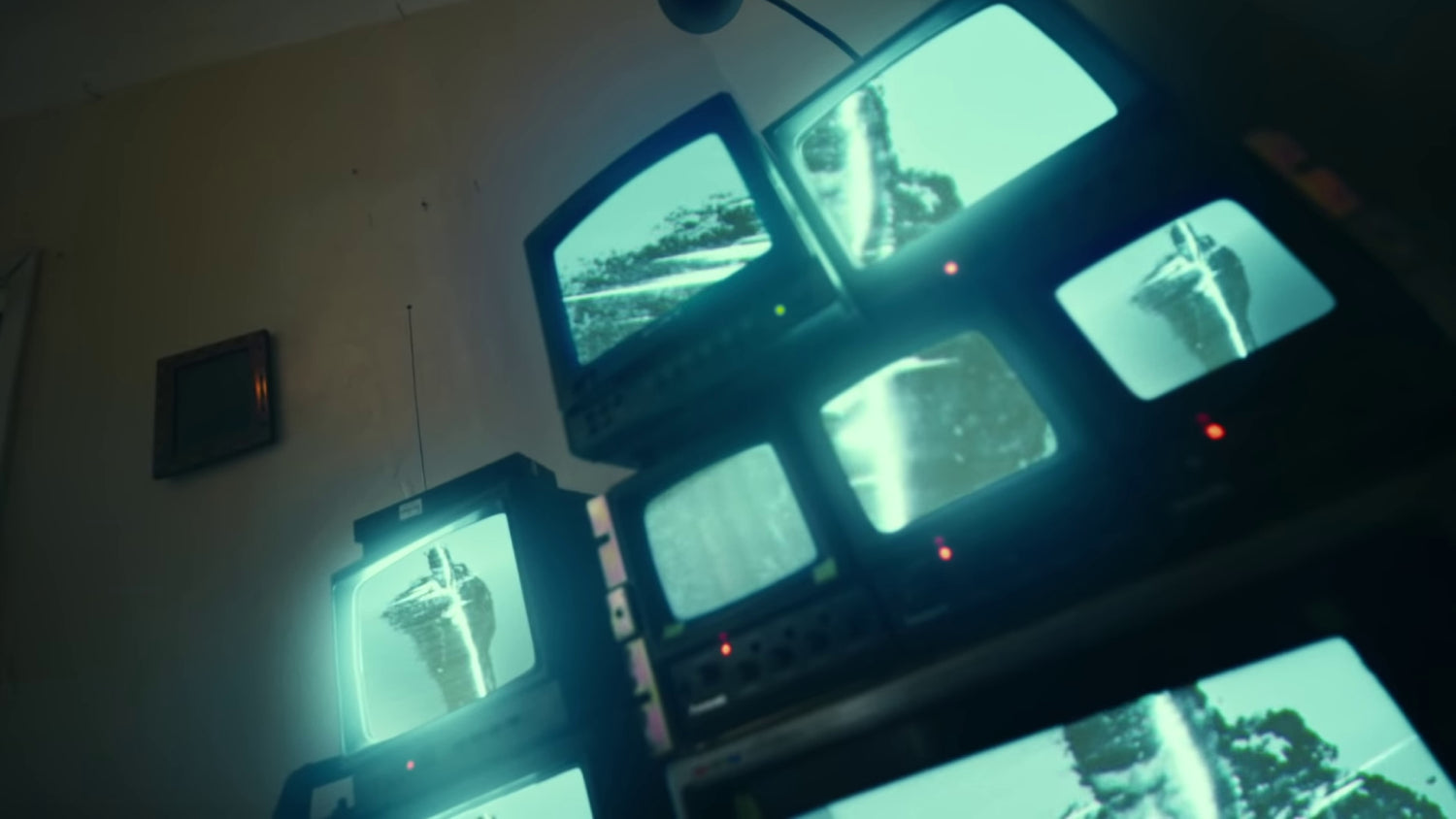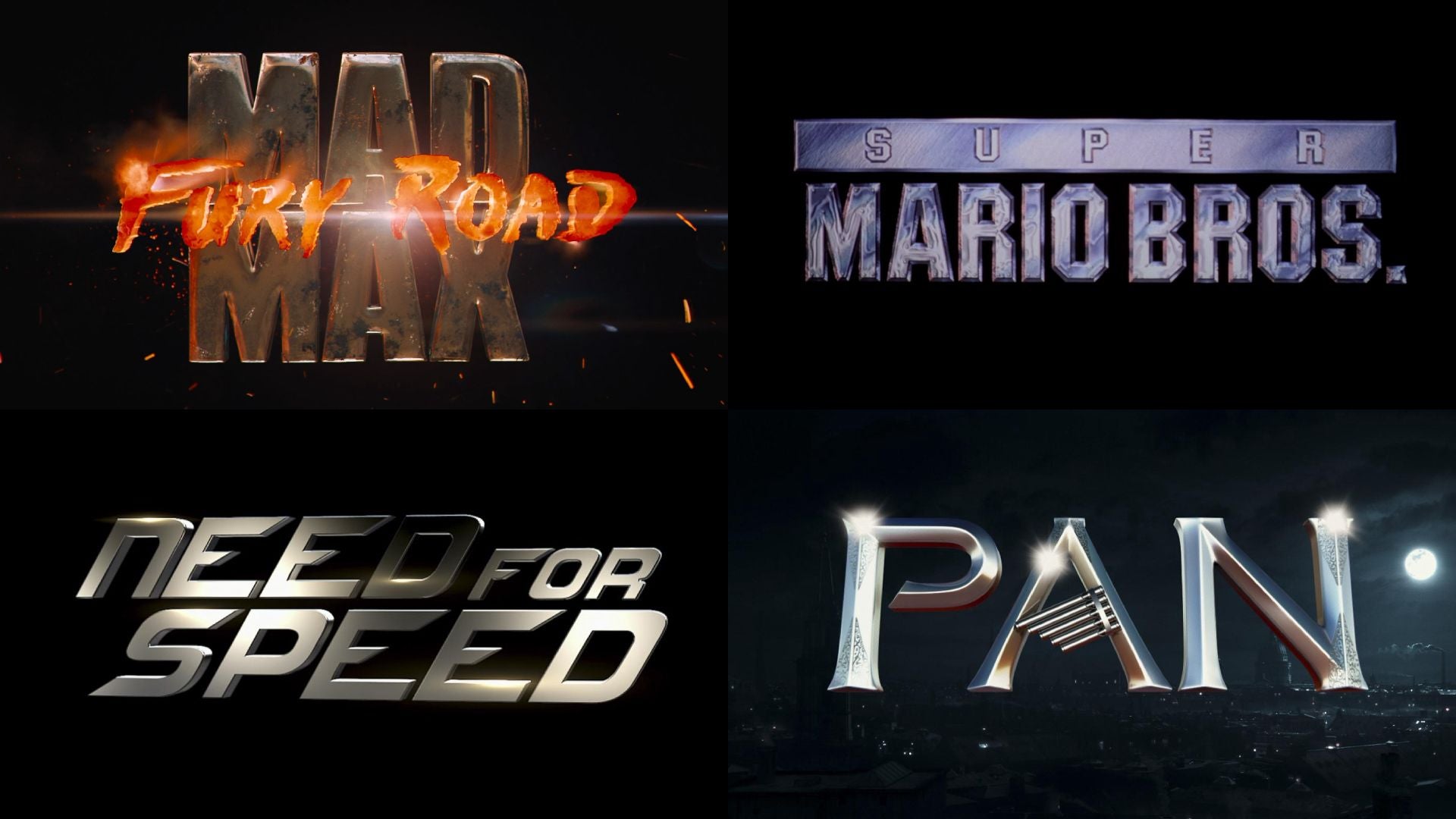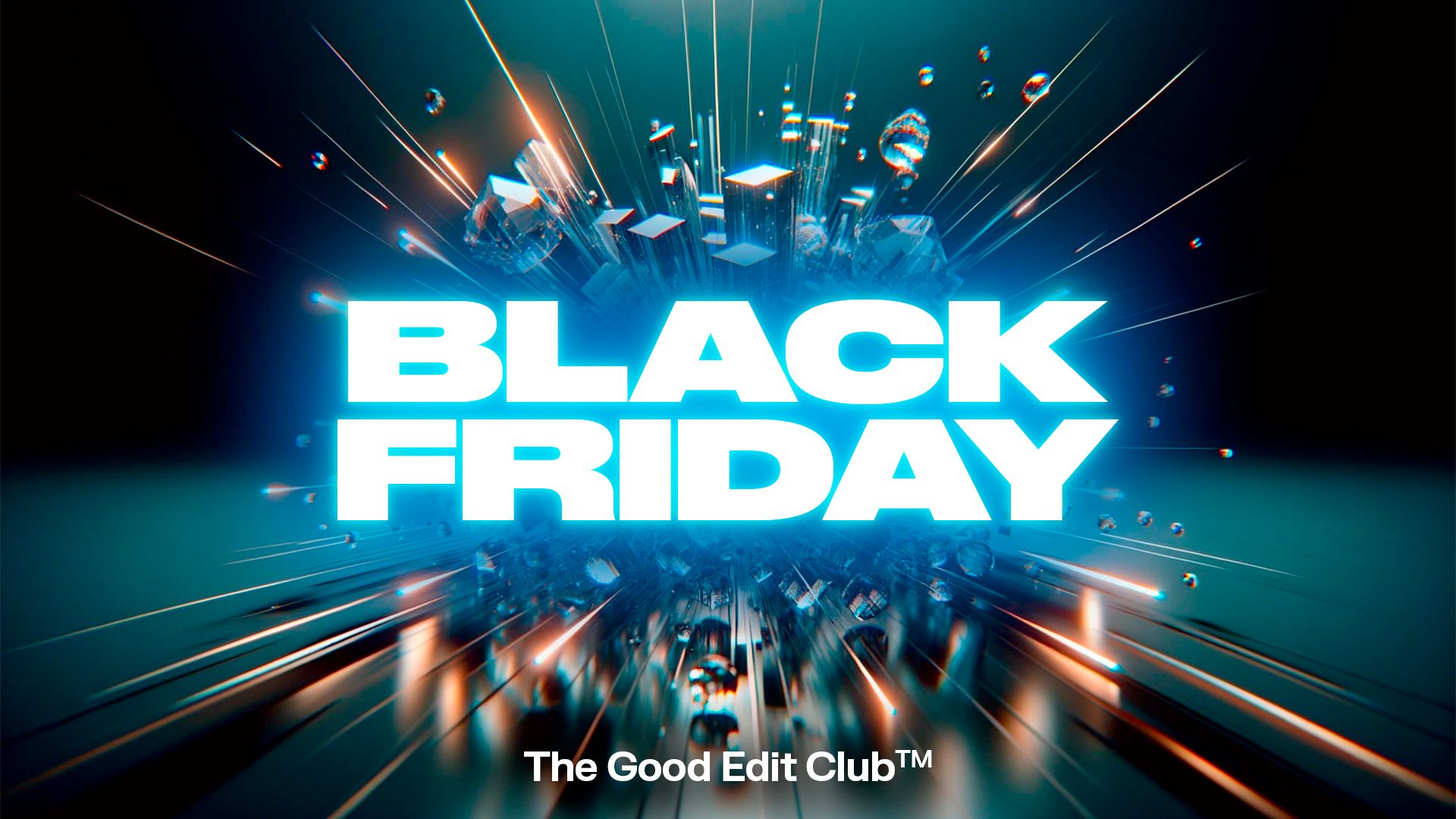VHS, short for Video Home System, was a popular analog video format used in the 1980s and 1990s. For editors today, this vintage look has become a staple tool to infuse character and grit into moving images.
We'll take a look at the visual elements that create this iconic style, and show you how you can achieve the VHS effect with our free stock collection of TV Glitch FX, adding texture and imperfections to rigid 4K footage in software such as Adobe Premiere Pro.
Want to get started right away? Download our FREE VHS-inspired overlays here.
Crafting the VHS Aesthetic
To effectively reincarnate the VHS aesthetic, one must distill its quintessential elements—grain, scanlines, colour distortion, and image blurring. These visual components work in unison to evoke the emblematic warmth and fuzziness that VHS is renowned for. Overlaying such textures onto HD footage infuses it with character, transporting the viewer back to an era when analog ruled supreme.
Understanding the nuanced static types, from the gentle roll of noise to the abrupt interruptions of signal loss, is pivotal. Pair this with meticulously selected fonts that epitomise the time, and marry them with the subtle, yet distinctive hum and click of VHS audio, to complete the experiential homage.
Distinctive Static and Noise
VHS static tells a story, each grain and line a testament to the analog glory that once dominated our screens.
The varying granularity of VHS noise patterns is pivotal in crafting a genuinely nostalgic ambiance.
Distinct types of interference, from the soft static haze to the jarring horizontal disruptions, are critical in replicating VHS authenticity—adding both texture and tangible history to the visuals.
Utilising these elements with precision elevates the footage, fusing it with a sense of imperfection and temporal displacement that only VHS can inspire.
Retro Typography: The VHS Font
The VHS aesthetic is incomplete without the quintessential fonts. These types of typography were stark, bold, and unabashedly simple.
By the mid-80s, VHS cover art and trailers employed typefaces that were thick, chunky, and often shadowed, with pixelated edges that exuded a digital but rudimentary charm.
The letterforms were designed to be legible on grainy screens, resulting in sans-serif fonts boasting wide strokes and generous spacing, which have now become synonymous with the VHS era.
Fonts such as 'VCR OSD Mono' and 'Press Start 2P' bring to mind the digital clocks and game consoles of the period, while titles displayed on-screen flickered with a static overlay, enhancing their nostalgic allure.
Typography is key to the VHS aesthetic, with bold, simple fonts designed for legibility on grainy screens. 'VCR OSD Mono' and 'Press Start 2P' evoke nostalgia and enhance the retrofuturistic narrative.
Incorporating these typographic styles into your visuals guarantees an authentic trip down memory lane, setting the tone for a retrofuturistic narrative.
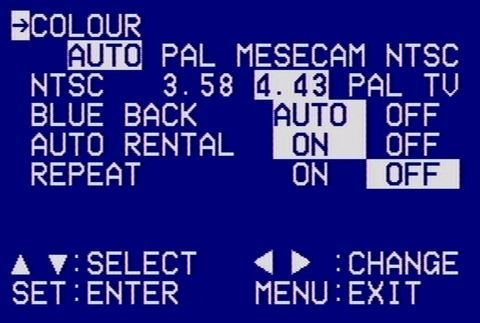
VCR OSD Mono | Available to download on DaFont (Free for Personal and Commercial Use)
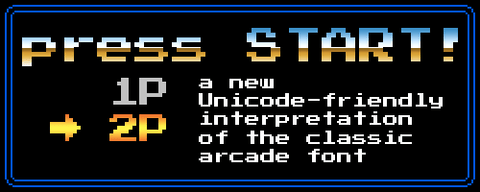
Press Start 2P | Available to download on Google Fonts (Free for Personal and Commercial Use)
Glitch Artefacts
The VHS tape hiss is unmistakable.
Within the realm of VHS overlays, glitch artefacts are fundamental. They are the visual interruptions that represent errors in the analog recording process, often seen as sudden distortions, colour shifts, or loss of signal. Historically, these defects were considered frustrations, but they are now repurposed to infuse content with a vintage patina. Deliberately, these glitches can be stylistic tools, imparting a sense of nostalgia or deliberate anachronism to the visuals.
They accentuate the vintage aesthetic.
Indeed, the allure of VHS is in its imperfections. Glitch artefacts like static snow, tracking lines, and jitter effects are uniquely tied to the medium, functioning as hallmarks of a bygone era of video production. They evoke an era when technology was more visibly fallible, which paradoxically adds to the charm of the footage when used purposefully in contemporary projects.
In combination with the right audio cues, these visual hiccups become storytelling elements.
Our Experimental VHS Glitch FX pack and free TV Glitch Textures collection are crafted to effortlessly introduce these particular anomalies into modern visuals. They emulate the distinctive essence of VHS glitches that have been popularised in recent years, especially within the music video sector, allowing filmmakers to replicate that classic magnetic tape aesthetic without resorting to antiquated hardware.
The Sound of Nostalgia
The auditory counterpart to VHS visuals is equally evocative. Whirring motors, the soft hiss of static, and abrupt, mechanical stops intone a symphony of yesteryear's technology.
In crafting a nostalgic soundscape, it's paramount to mingle these diegetic sounds with the warbled audio reality of VHS playback. Pitch fluctuations and a distinct lo-fi timbre are the signatures of analog soundscapes, pivotal for augmenting the visual pastiche of VHS aesthetics.
Audio Distortions Mimicking VHS
The crackling audio backdrop of VHS is saturated with character. Its warm, analog imperfections breathe life into the visuals, infusing them with history.
Pitch warbles, coupled with the occasional drop-outs, create an auditory texture filled with the irregular rhythm of vintage tech. Such characteristics are integral to the authentic VHS feel.
Incorporating Vintage Audio Elements
The audio landscape of VHS is rich with nuances that evoke nostalgia. These auditory cues are key to the time capsule effect.
In crafting a soundscape, the hiss and hum must be balanced delicately. Too much can distract, too little may not convince. Our Experimental Glitch FX provides just the right amount of vintage flair.
Furthermore, magnetic tape deterioration led to unique sonic signatures. Aspects such as volume fluctuation and muffled sounds are meticulously replicated for authenticity.
VHS in Modern Media
In the realm of contemporary visual storytelling, the VHS aesthetic delivers an unmistakable ambiance. It's an artful homage to past eras that enriches the narrative texture, providing contrast in a world often dominated by the crispness of high-definition imagery. Directors and editors frequently summon this style to evoke emotion, nostalgia, and a sense of authenticity that resonates with audiences yearning for a connection to bygone days.
Hyundai's 'Style Set Free' campaign (2020) perfectly balances slick, high-end visuals with analogue overlays and effects.
Moreover, the resurgence of VHS isn't purely a matter of aesthetics—it's also a thematic tool, a signature of a director's intention to invoke reflection on the analog era's place within our digital world. Examples abound in the film and music video scene, where the visual hiss, jitter, and colour bleed of VHS overlays suffuse projects with a retro coolness that's paradoxically on the cutting edge.
Nike's 2020 campaign, Unite, features a great example of how the presence of VHS can influence the way we perceive a story. Flashing through clips of 'great moments' through the ages of Jordans, we arrive at dollar store – a basketball game plays in the background on the vintage CRT television: Williamson scores. Through the blocky pixels, the audience immediately get a sense of the vast history attached to these iconic trainers; instead of a mere aesthetic choice, it's one which adds context and drives the narrative.
Cinema's Nostalgic VHS Homages
The allure of analog crackles to life in the soft focus of VHS-inspired film scenes. It whispers tales from the past into the present cinematic language.
In Beyond the Black Rainbow, Panos Cosmatos bathed his film in a VHS palette, weaving an estranged 1980s texture, challenging modern high fidelity with deliberate degradation and noise.
Similar aesthetic choices punctuate Stranger Things, delivering a pastiche of 80s nostalgia; its synthesis of modern storytelling and VHS visuals forms a compelling bridge across time, enthralling a new generation of viewers.
Edgar Wright's Hot Fuzz, despite its contemporary setting, adopts grainy interludes reminiscent of home videos, infusing scenes with VHS authenticity that contrast sharply with the digital clarity surrounding those moments.
Utilising our Experimental VHS Glitch FX and free TV Glitch Textures packs accentuates these homages, enabling filmmakers to infuse their work with that quintessential VHS character, shaping unique temporal tapestries in their narratives.
Music Videos with a Retro Vibe
Music videos often harness the nostalgic allure of VHS to evoke a bygone era, creating a retro ambiance that resonates with the audience.
- Calvin Harris & Dua Lipa - Perfectly encapsulating a retro disco, "One Kiss" flaunts VHS-style visuals to match its vintage beats.
- The Weeknd - "Blinding Lights" employs VHS glitches to transport the viewer to an 80s neon-drenched dreamscape.
- Bruno Mars - The video for "Finesse" with Cardi B indulges in 90s tape aesthetics to complement its throwback melodies.
- Ariel Pink - "Put Your Number In My Phone" takes a lo-fi VHS approach, imbuing the video with the charm of vintage home movies.
- Tame Impala - In "The Less I Know the Better", VHS overlays are pivotal to its psychedelically retro narrative.
Using a VHS Overlay in Your Own Videos: Tips and Techniques
When incorporating a VHS overlay into your videos, consider these tips:
- Choose the right overlay that matches your desired aesthetic.
- Adjust the opacity to control the intensity of the effect.
- Layer multiple overlays and experiment with blending modes.
- Use the VHS effect sparingly to avoid overwhelming the viewer.
- Incorporate audio distortions and imperfections for an immersive experience.
- Ensure the VHS effect aligns with your video's intention and theme.
Frequently Asked Questions
What is a VHS overlay?
A VHS overlay is a visual effect that replicates the look and feel of old VHS tapes, adding a vintage and nostalgic touch to videos.
How can I create a VHS overlay?
To create a VHS overlay, you can use various techniques such as adding static, applying glitch effects, using vintage fonts, and incorporating VHS sound effects. Our Experimental VHS Glitch FX and free TV Glitch Textures packs can help you achieve the desired effect.
What are the different types of static in a VHS overlay?
There are different types of static that can be used in a VHS overlay, including horizontal lines, vertical lines, snow-like noise, and colour distortion. Experimenting with these elements can add authenticity to your VHS look.
What font styles work well with a VHS overlay?
When using a VHS overlay, fonts that have a retro or vintage feel complement the aesthetic. Popular choices include pixelated fonts, typewriter fonts, and fonts with a worn-out or distorted appearance.
How can I incorporate glitch effects into a VHS overlay?
Glitch effects are an essential part of a VHS overlay. You can achieve this by adding digital artefacts, pixelation, colour shifts, and random distortions to your video. These effects simulate the glitches commonly found in old VHS tapes.
Want to learn how to use our free VHS overlay pack on your own images and videos? Watch our easy-to-follow tutorial on YouTube.

